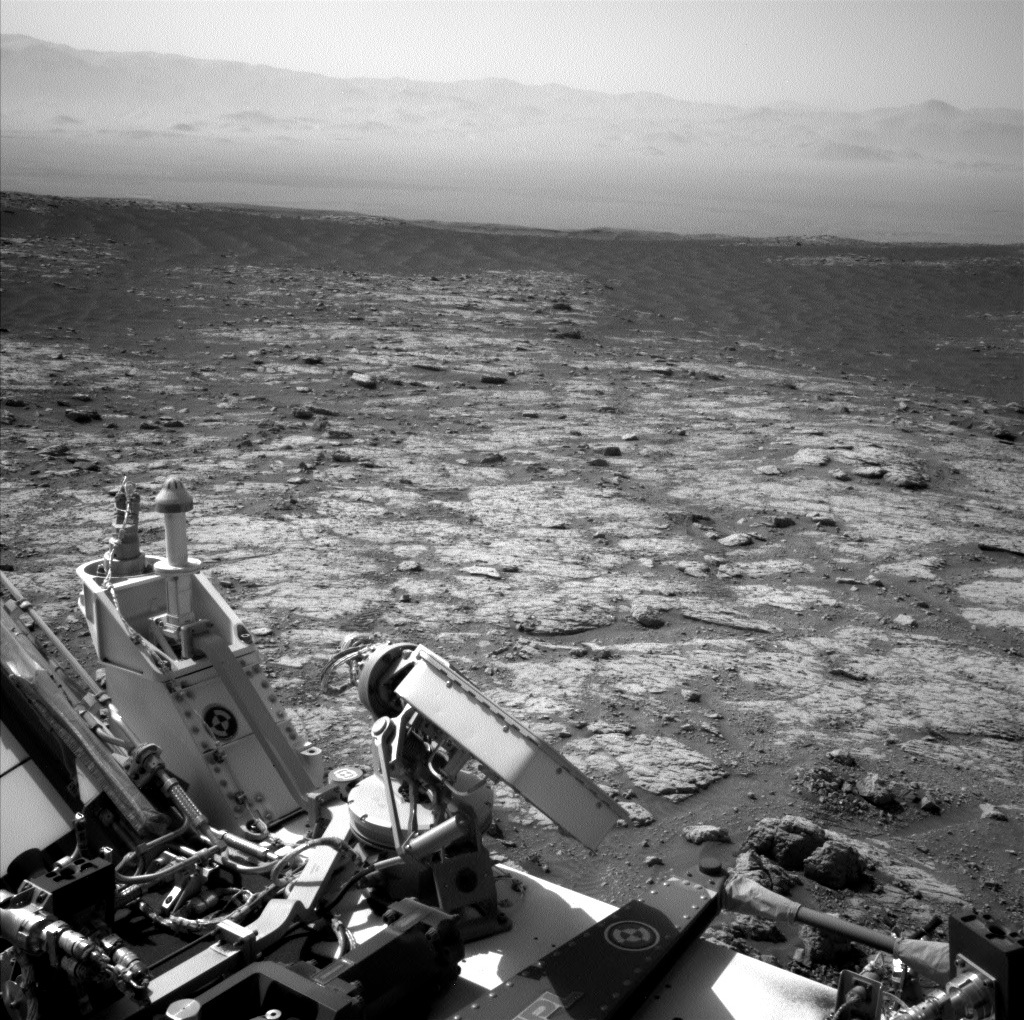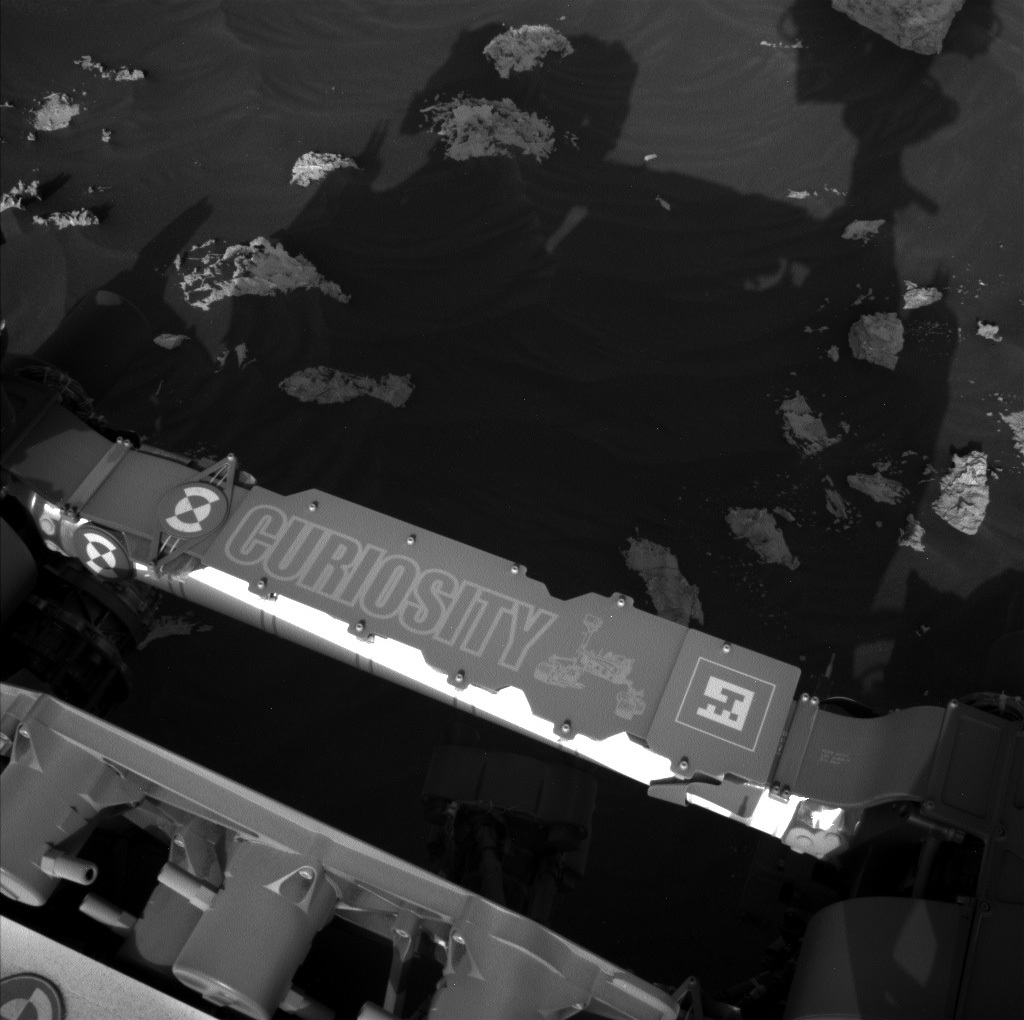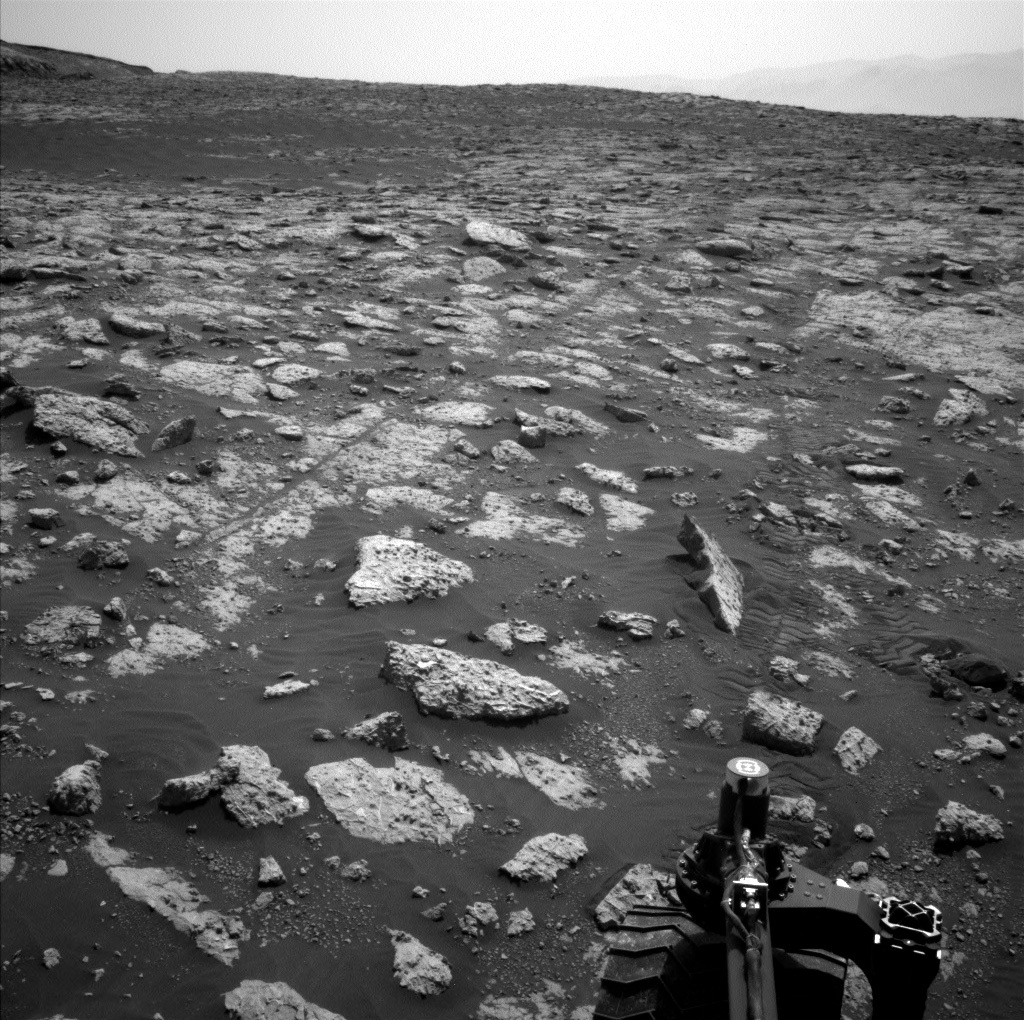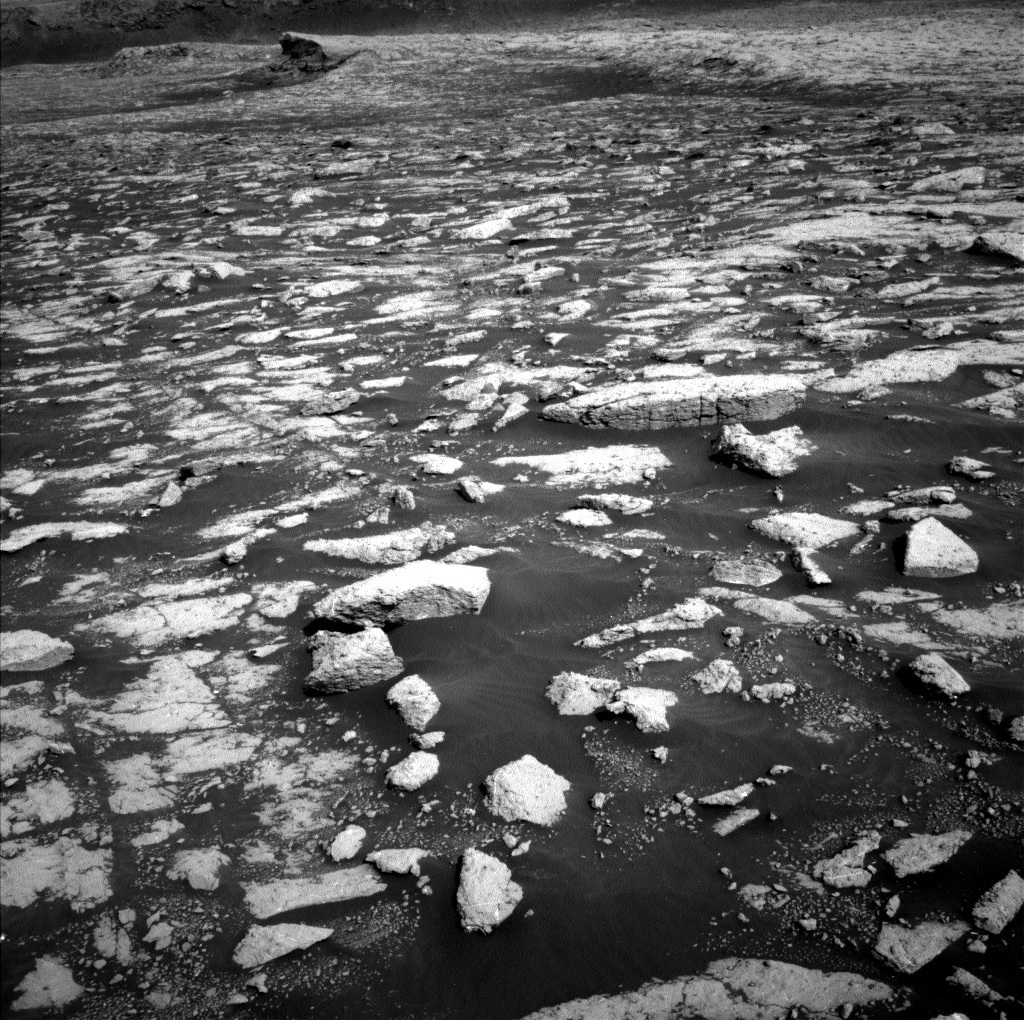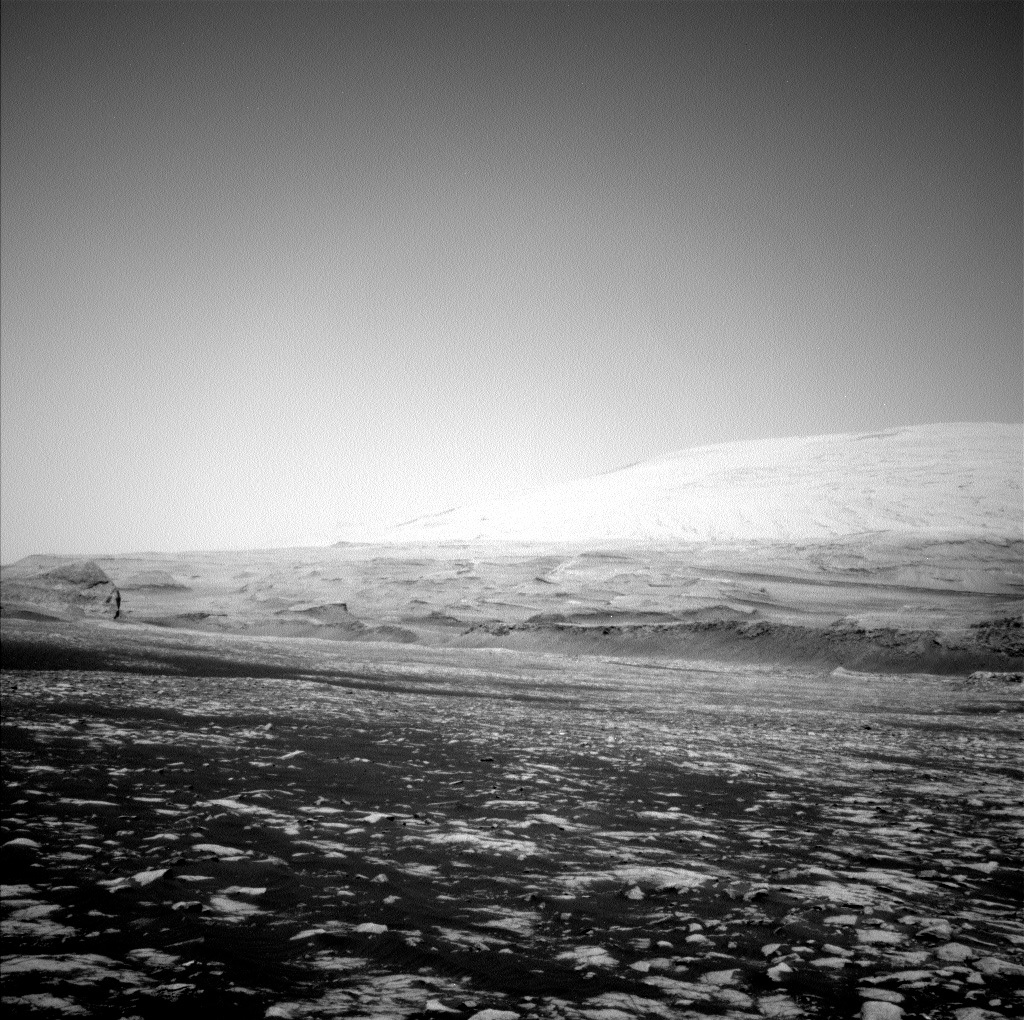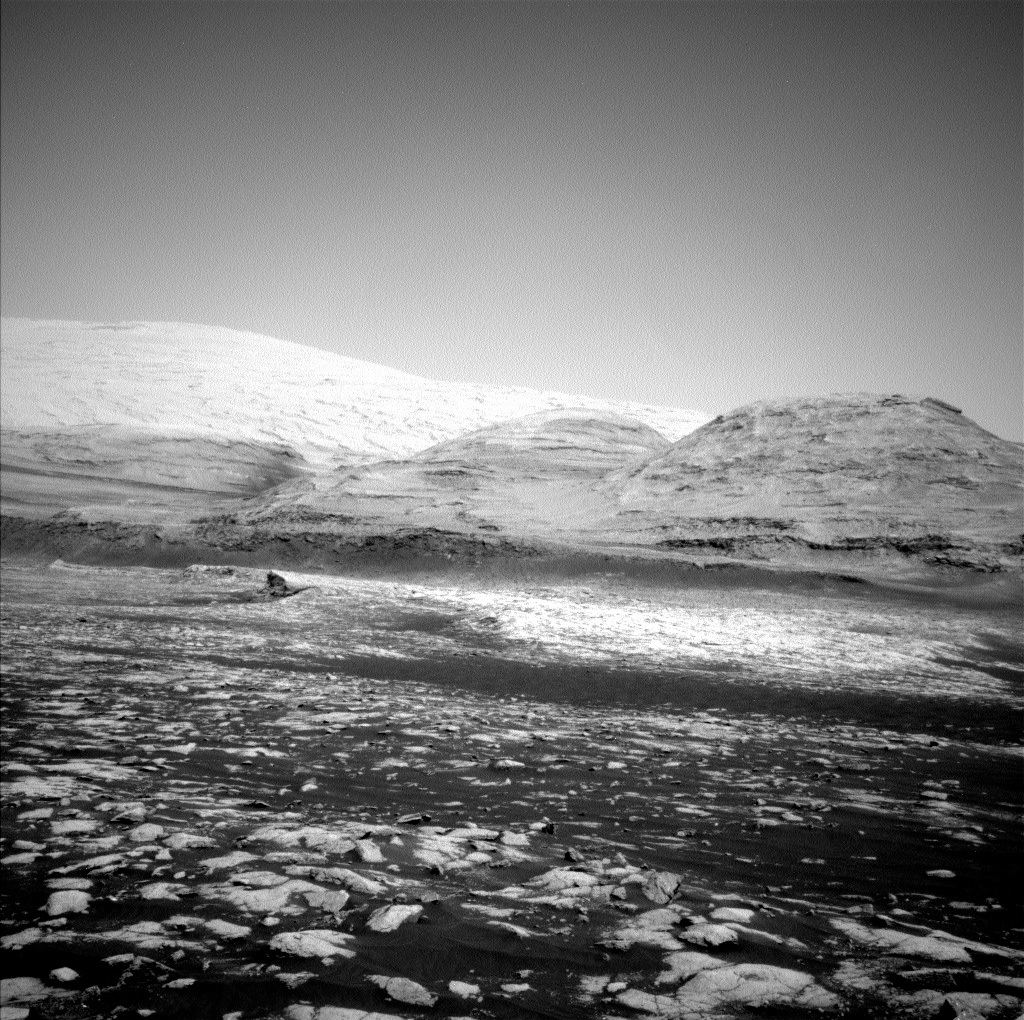March 3, 2021
Sols 3049-3050: Marval-ous
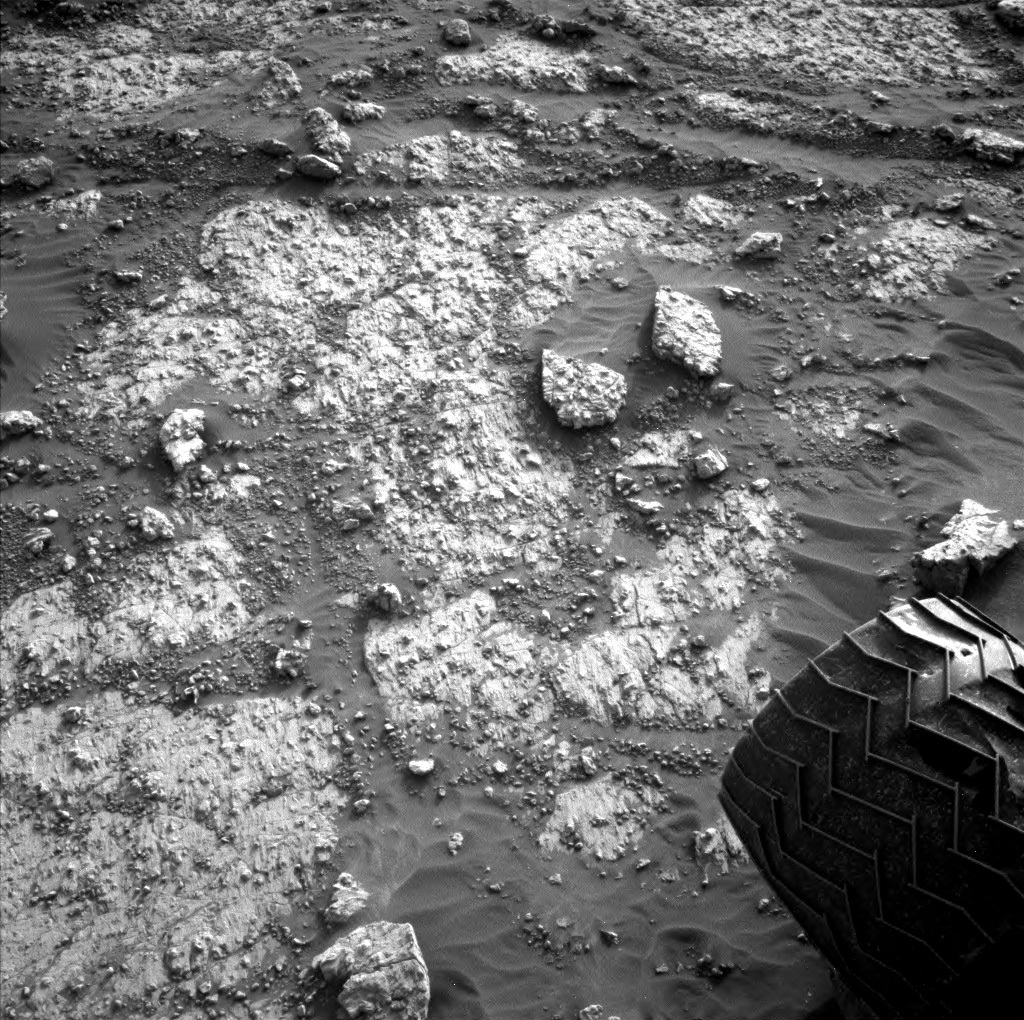
This image was taken by Left Navigation Camera onboard NASA's Mars rover Curiosity on Sol 3047. Credit: NASA/JPL-Caltech. Download image ›
Curiosity continues her climb up toward the lovely cliff of “Mont Mercou” and what could be the start of the sulfate-rich layers of “Mount Sharp” that the science team has had their eye on since Gale crater was identified as our landing site. Mountain climbing has its risks, though, and we found that Curiosity had suffered a bit of an ankle turn - as much as a rover has ankles - at the end of the Sol 3047 drive. The right middle and rear wheels had turned up on some of the lumpier rocks that dot the current terrain (one of which you can just spy under the right middle wheel in the above image), putting us in a not-quite-stable position to unstow the arm and get APXS and MAHLI close to targets in the workspace. That meant we had to forego APXS today, and were limited to MAHLI imaging of the targets “Valojoulx” and “Marval” with the camera safely 25 cm away from their surfaces. The former represents a flatter part of the bedrock in the workspace, and the latter a lumpier, more resistant part of the bedrock.
The awkward placement of the wheels did not prevent all the non-arm instruments from keeping busy, however! We will assess the spectral character of Marval with both ChemCam passive and Mastcam multispectral observations. We will acquire another ChemCam passive on “Chaleix,” a block that is standing proud among the lower-lying bedrock patches around us, thus revealing a vertical face ripe for observation. That vertical face also made an irresistible target for a small Mastcam stereo mosaic. The dramatic buttes above Mont Mercou will be covered by two ChemCam RMI mosaics.
Right before the rover drivers wiggle our wheels off the troublesome rocks of today’s parking space, Mastcam will acquire a large stereo mosaic of Mont Mercou. Then, for an encore, Mastcam will acquire another stereo mosaic of Mont Mercou a few meters into our drive to our weekend parking spot. The hope is that not only will each individual stereo mosaic give us a better picture of the structure within the cliff, but the mosaics together can be combined into their own stereo view, adding different perspective and detail of the cliff.
Mastcam will image the sky as well as rocks. On both evenings of the plan, Mastcam will image a swath of sky above Mount Sharp to look for clouds. Not to be outdone, Navcam will also image the sky to look for clouds and dust devils multiple times in the plan. RAD and REMS keep steady watch on our environment throughout the plan. DAN will ping the ground in back of the rover before, during and after our drive, keeping steady watch on the state of hydrogen in the subsurface. Here’s hoping Curiosity lands in a slightly less bumpy spot for the weekend!

